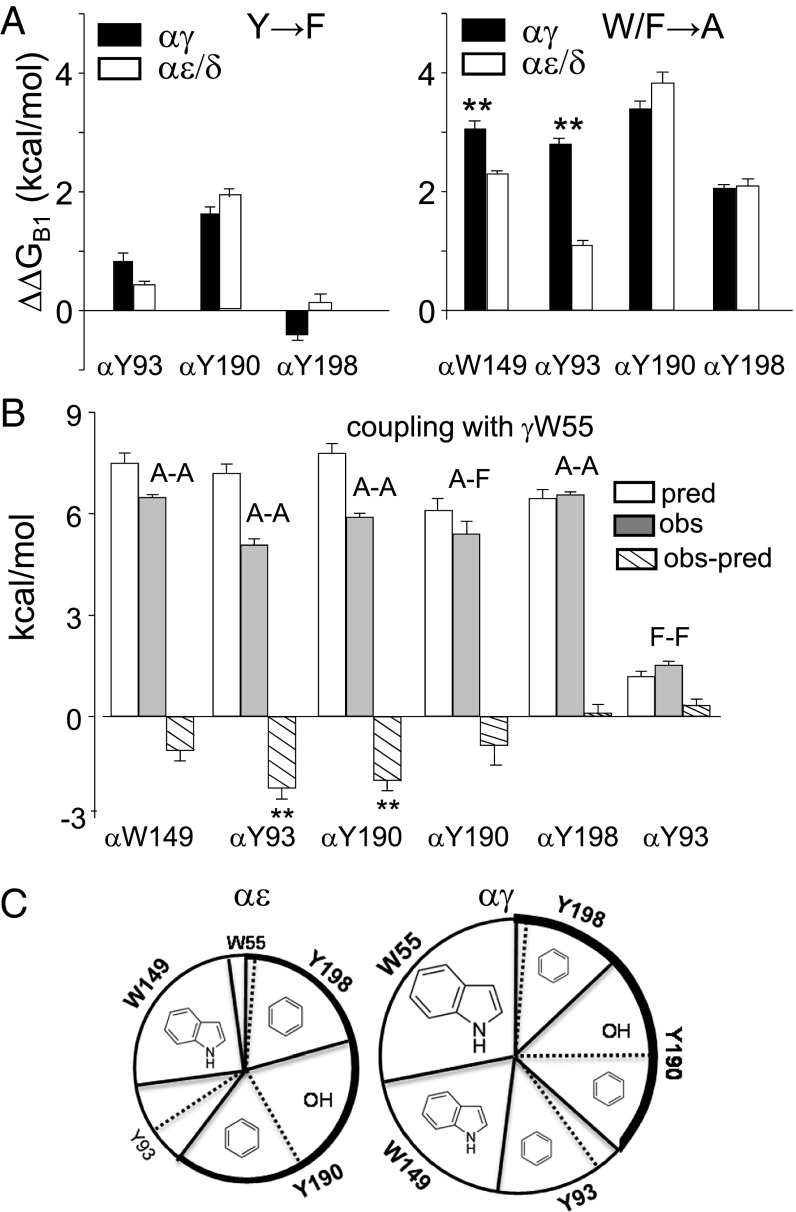Fig. 4.
Effects of mutations of aromatic residues at single-agonist sites. (A, Left) Removal of the tyrosine hydroxyl had the largest effect on ΔGB1ACh at αY190 and was similar at αγ vs. αε/δ. (Right) Removal of the aromatic group was similar at αY190, αW149, and αY93 at αγ. The effect was greater at αγ vs. αδ/αε only at αW149 and αY93 (mean ± SEM; n ≥ 3 patches). **Significance at 95% confidence interval. (B) Coupling between γW55 and the α-subunit aromatics estimated by mutant cycle analyses (SI Appendix, Fig. S4). pred, predicted ΔΔGB1 for the mutant pair (sum of two ΔΔGB1 values for single-site mutations); obs, the observed ΔΔGB1 for the mutant pair; obs-pred, the coupling energy. γW55A is energetically coupled only to αY93A and αY190A. (C) Contribution of functional groups to ΔGB1ACh. The area of each slice is approximately proportional to the free energy lost on removal of each functional group. At αε and αγ, the aromatic groups of αW149, αY190, and αY198 and the hydroxyl of αY190 make approximately equal contributions. At αγ, W55 makes a huge contribution (∼−4.5 kcal/mol), and the aromatic group of αY93 contributes about as much as αY198. Thick line, loop C contribution.

